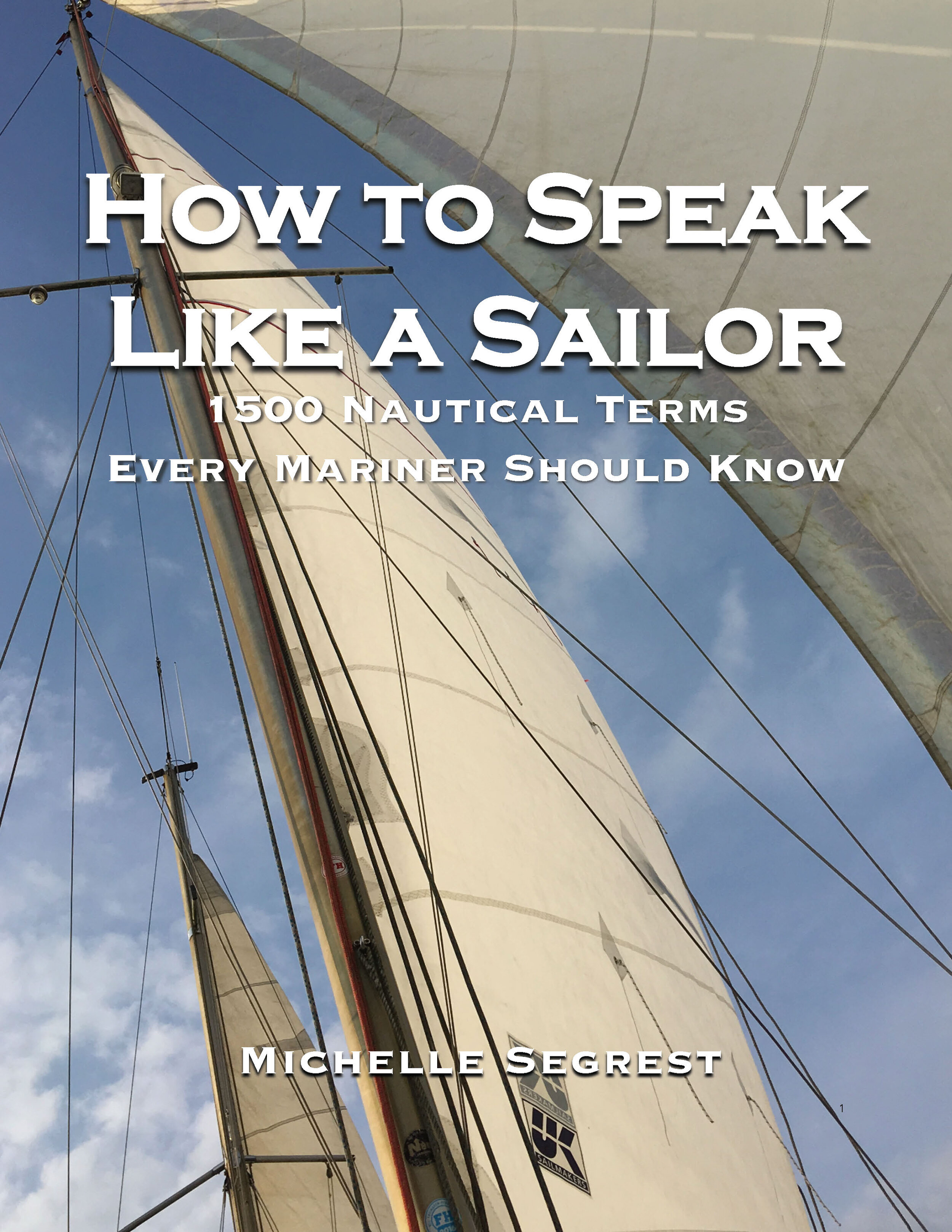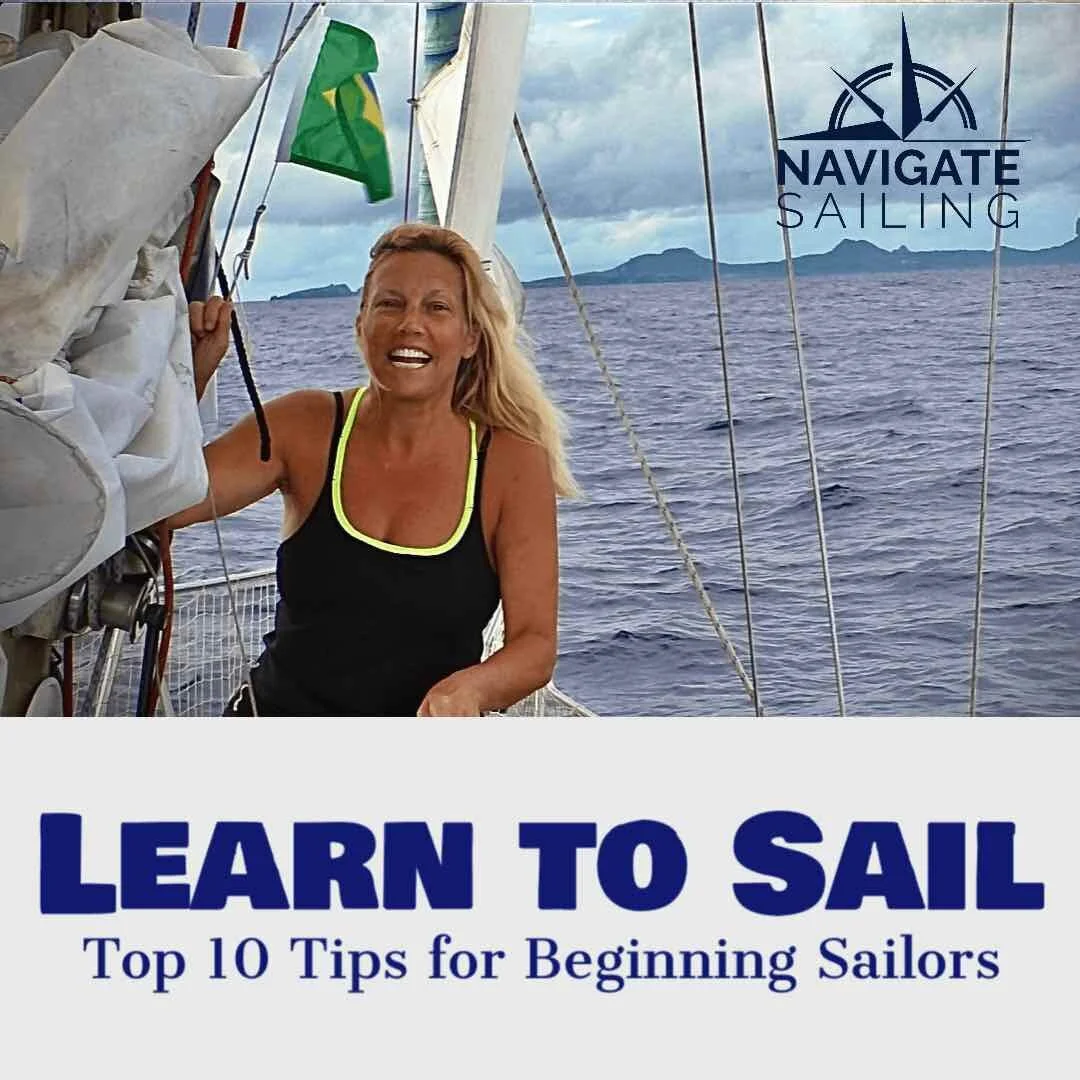Sailing Across the Atlantic – 8 Lessons Learned
/Read the top 8 lessons to learn about sailing across an ocean, including tips about passage planning, provisioning, beating the heat, becoming more self sufficient, planning for tropical squalls, trusting your gut, finding ways to fight boredom, and taking care of the trash onboard.
By Michelle Segrest, Navigate Sailing — How to Get Your Sea Legs
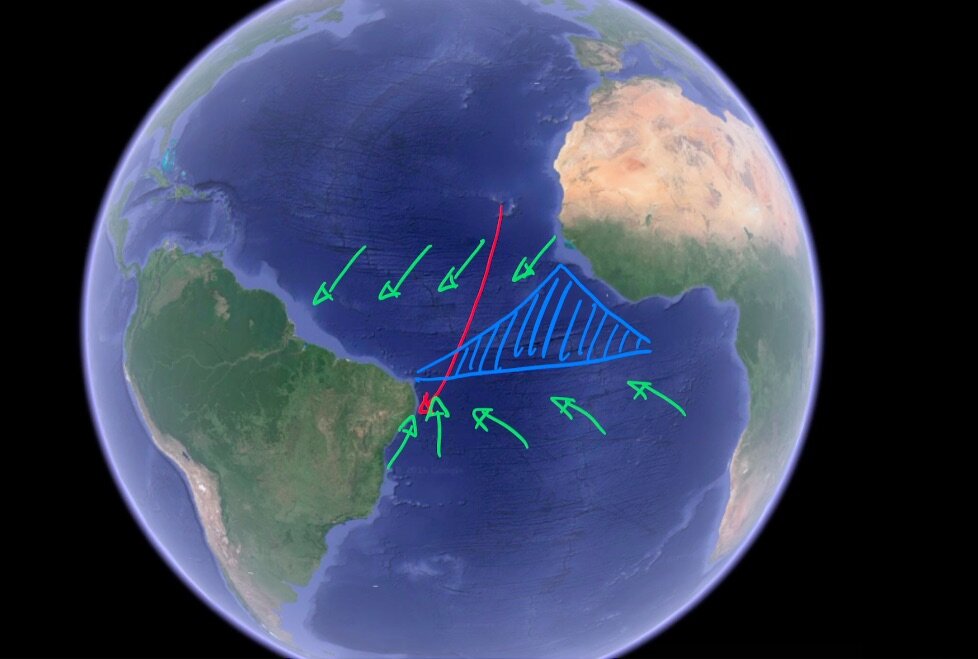
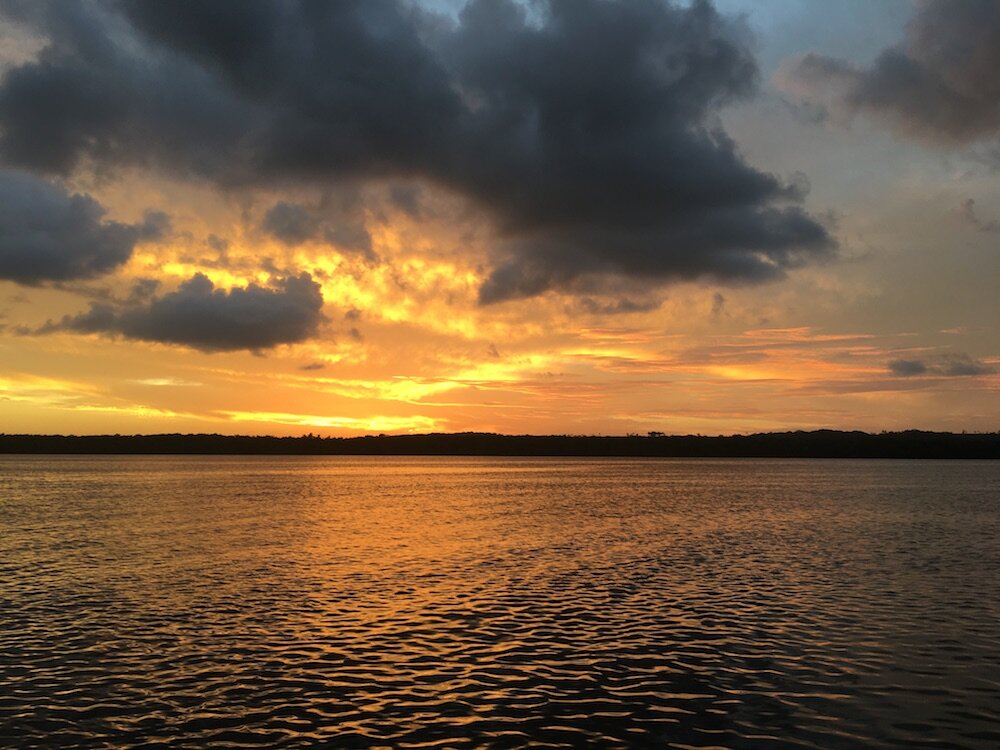
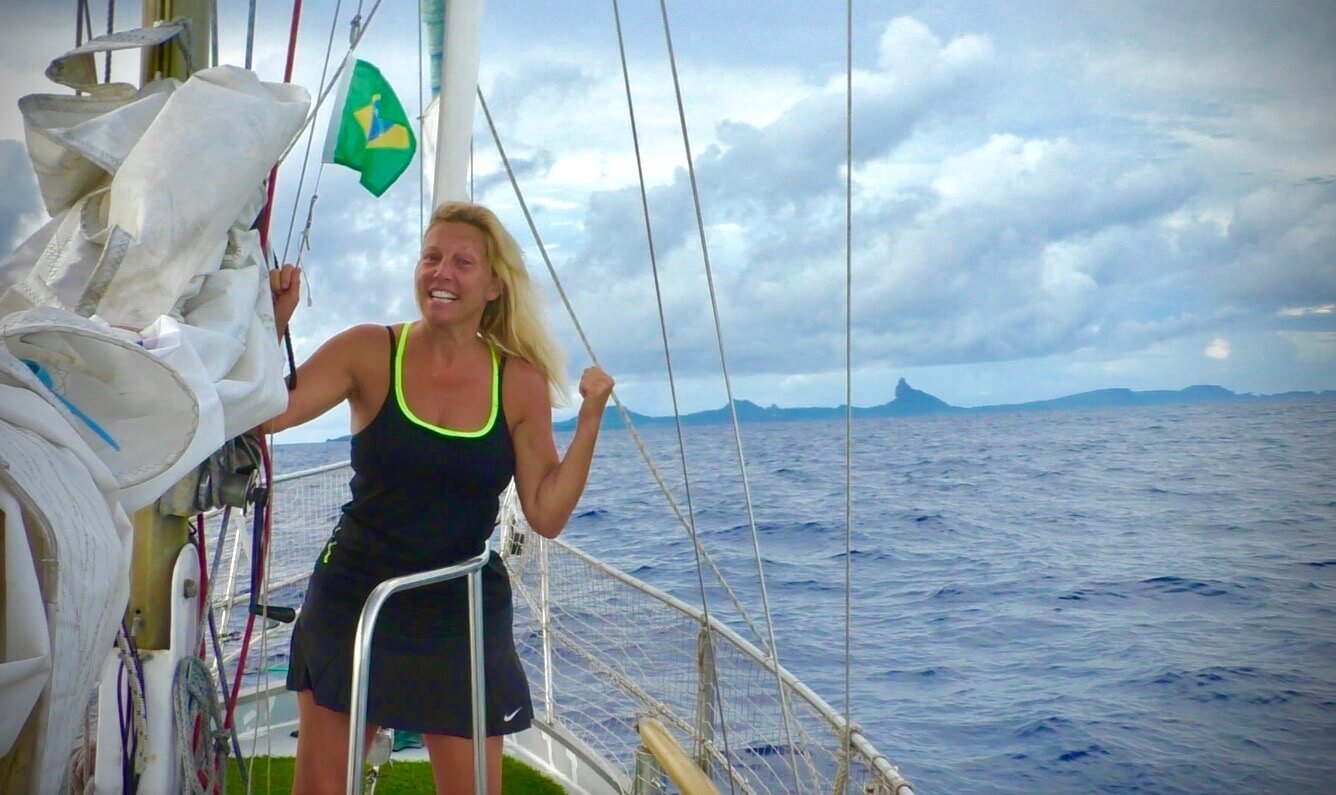
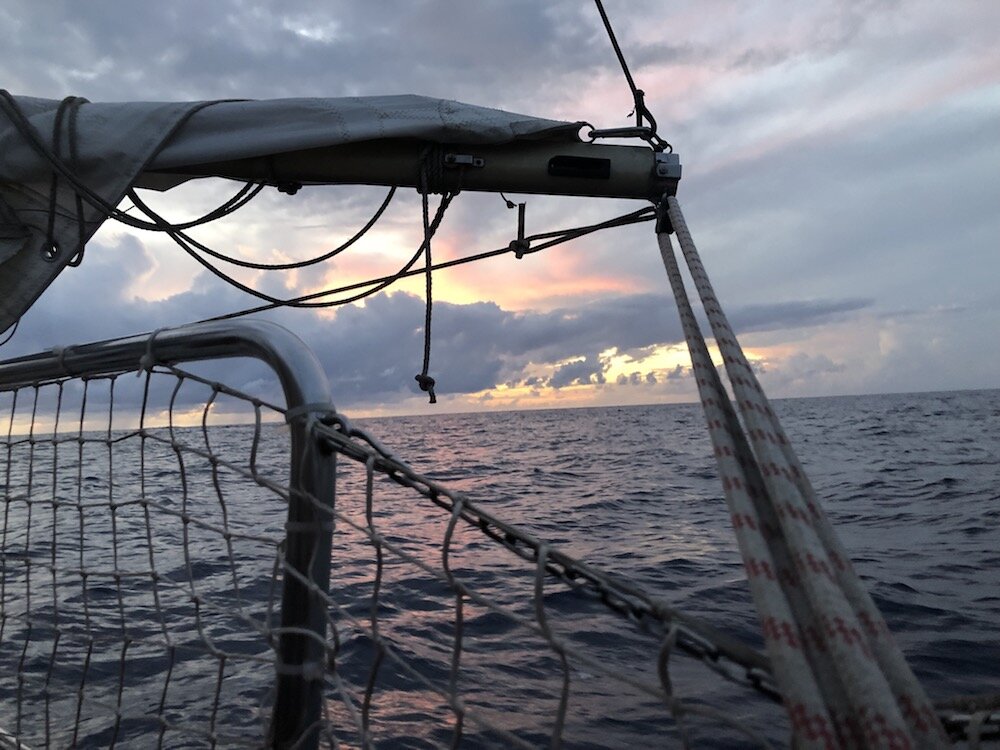
We are not the first sailors to ever cross an ocean, and we certainly won’t be the last. But this 1,690 nautical-mile sailing adventure across the Atlantic Ocean was a truly special experience. We sailed from Mindelo, Sāo Vicente, Cape Verde, Africa to Cabedelo, Brazil, South America in 21 days and learned some valuable lessons along the way about things we did right, and a few things we would do differently.
Our original plan was to take the easy Milk Run route, crossing the Atlantic with the trade winds heading due West to the Caribbean. But that’s not what we did. We left the popular trade wind route and went off the beaten path, across the Equator, and through the doldrums to the far East coast of Brazil.
We had the extra challenges of sailing through the doldrums, experiencing the brutal Equatorial heat and daily thunderstorms.
No sailing passage is perfect, but here are 8 valuable lessons we learned along the way.
1. When sailing across an ocean, have a solid passage plan.
Passage planning is always important, but it becomes even more essential the longer the passage. The longer the passage, the more vulnerable you are to weather changes and unexpected events. A weather forecast beyond five days is an illusion and most likely you will not be able to escape approaching weather systems. Good weather routing is the key to long passages.
In our case, the main question was where to cross the doldrums. The ITCZ, or the doldrums, are characterized by brutal heat, low wind, and furious thunderstorms. All this doesn’t sound very inviting, so you want to cross them as fast as you can.
The next challenge is the shape of the prevailing winds on the other side. If you cross them too far east, you’ll risk staying in them for a long time. If you cross them too far west, you might see strong head winds on the other side. We decided to head Southwest first until we reached 29 degrees west, then head due South, then cross the Equator at 29 or 30 degrees west, and then continue Southwest to Brazil.
This plan played out well for us. We had a few days with little wind, but we always had enough to keep moving. Our navigation equipment worked out well. We have a Raymarine system that worked flawlessly, and we downloaded GRIB data using our Iridium Go Predict Wind offshore.
Our strategies worked well, and we would do it the same way again.
2. When sailing across an ocean, you need to become more self sufficient.
We also learned the importance of becoming more self sufficient, and discovered that we needed to make some upgrades to our natural power resources.
There is nowhere you depend more on yourself than in the middle of an ocean. Self sufficiency is crucial when it comes to energy, tools, and spares. We were in good shape with tools and spares, however energy was always a scarce resource. Our wind generator made some contribution, but the performance curve was a bit optimistic. In the trade winds, when the wind is coming from behind on the long downwind passage the wind generator simply doesn’t produce a lot of energy.
The solar panels did not meet our expectations. The position of them on the deck was often covered by the shade of the sails. So, we had to operate the motor or our gasoline generator almost every day to charge the batteries. Once we made it to Brazil, we added 500 watts to our solar power system to become more self sufficient.
3. There will be down time on a long sailing passage.
I brought 12 books on board for our three-week passage, but I don’t think I was properly prepared for just how much down time we would have while sailing across an ocean. After this passage I invested in a Kindle waterproof Paperwhite so that I could download many more books to keep me busy on long sailing passages. Check out my favorite books to read on a long sailing passage.
We also took advantage of the down time and worked on our celestial navigation skills by using our sextant. With nothing but time to kill, this is a great skill that every sailor can use. It’s also fun to learn new things. We also took advantage of some language learning apps so brush up on our Portuguese for our time in Brazil.
4. Provision properly for a cross-Atlantic sailing passage.
One thing we did right was with our provisioning. We brought along about 600 liters of water for two humans and two dogs (our beagles, Cap’n Jack & Scout), but we only used half of that. We needed this water for drinking, cooking, and showering (although we did catch rain in buckets and in the sails for extra dish-washing and showering water. We don’t have an on-board shower, so we collected rain in our solar-powered deck shower.
Our fresh vegetables lasted about a week, and we managed to have fresh fruit all the way to the end. Follow this link for a complete list of all of our provisions we had on board for our three-week ocean crossing. We can also highly recommend The Boat Galley Cookbook and How to Store Food Without Refrigeration.
5. Find ways to beat the heat when crossing the Equator and the doldrums on an ocean crossing.
The blazing heat became a huge challenge for us on this passage. Temperatures reached 104 degrees Fahrenheit (40 degrees Celcius). We struggled to find any relief from the heat. We constantly doused ourselves with buckets of cool seawater and jumped in when conditions allowed, although the big Atlantic swells continued to present dangers even when there was not much wind. We don’t recommend jumping into the Atlantic without connecting yourself with a line to the boat. Don’t underestimate the force of the currents and the swells, even when it seems to be calm waters.
If you are sailing with dogs, try to keep them in the shade of the cabin below and think about having a cooling pad or cooling vest on board to help with the heat. You can also douse them with cool sea water to cool them off.
6. Trust your gut when sailing across an ocean.
After 180 days since our original departure from Stralsund, Germany, and 16 days at sea, we reached the remote island of Ihla Fernando de Noronha off the coast of Brazil, and wanted to take a short break to explore one of the world’s most amazing remote islands.
However, sometimes your worst night at sea is the night you spend at anchorage.
From the start, we did not feel comfortable at our anchorage in Noronha. It was much less protected than the chart indicated. It was completely open to the swell. The better protected area was occupied by local boats. Taking into account the drastic wind shift during the frequent thunderstorms there was only partial protection from the winds. It took hours for us to get the anchor to hold securely and stop dragging. The pounding of the high swells forced us to go on anchor watch all night long.
After a brutal night at anchorage, we weighed our options to stay another night at the unsecured anchorage or get back to sea where we felt more safe.
We wanted to stay another day to explore the island, so we checked out other anchorages. But because of the high swell forecast, which predicted 2-1/2 to 3-meter swells for that night, we decided to leave before nightfall.
Meanwhile, the anchor had wedged into the rocks so severely we couldn’t break it free—not manually, not using the electric windlass, and not by using the engine. We had to make the decision to cut the anchor and leave it behind, making the already expensive anchorage in Noronha even more expensive.
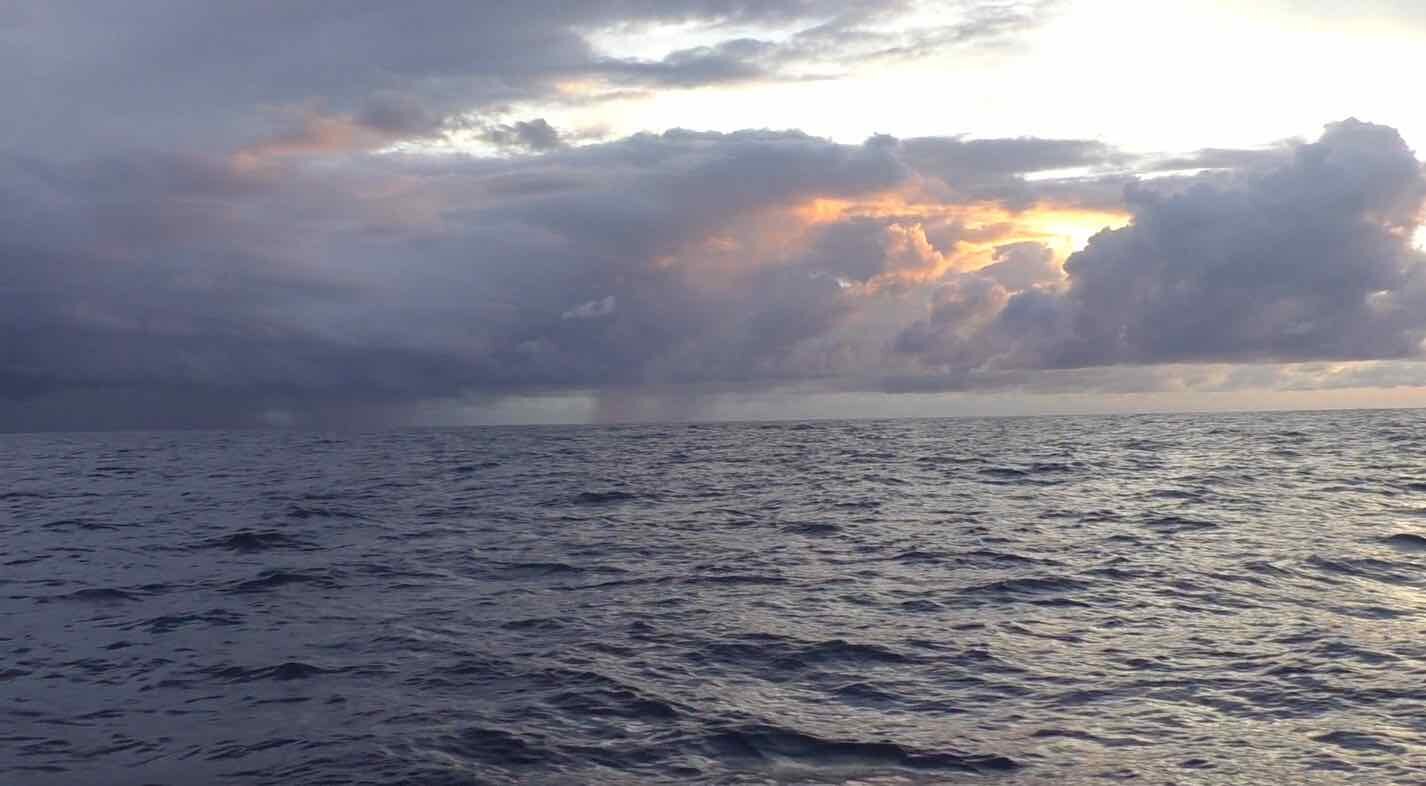
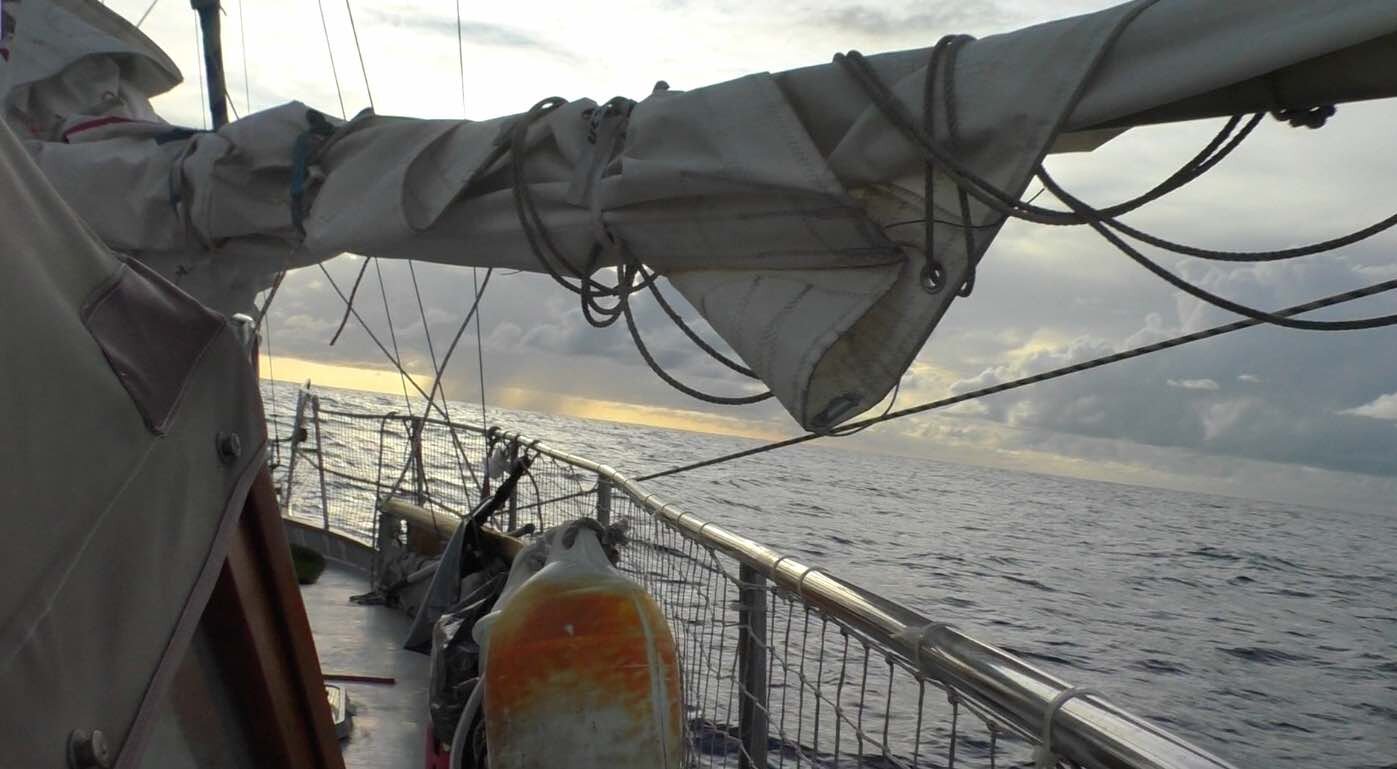
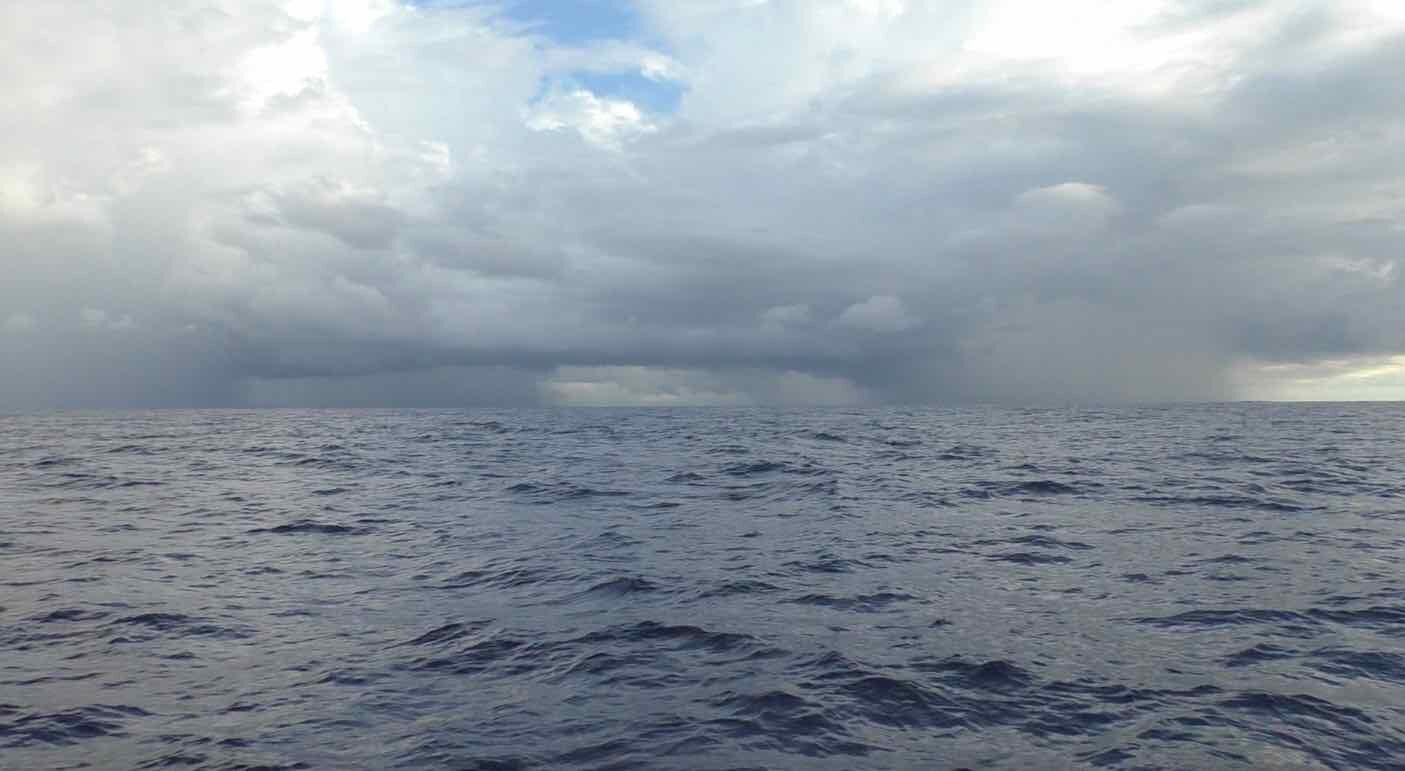
7. Prepare for thunderstorms and tropical squalls when sailing across an ocean.
Tropical squalls can happen at any time on an ocean crossing.
No matter how good the weather forecast, preparing for an ocean crossing also means preparing for storms. Some sailors like to say, “At some point, Neptune will catch you with your pants down.”
We are talking more about squalls and tropical thunderstorms than major depressions. The doldrums are notorious for low winds and fierce thunderstorms that can last anything from two hours to an entire night. They come with so much rain it’s difficult to tell where the ocean surface begins. Wind speeds can easily exceed 50 knots.
During the day you can see them coming and get prepared. But at night, hell breaks loose faster than you can spell your first name. So at nightfall, we reduced the sail area, which is a pity in the low winds because you lose some speed, but it’s necessary to prevent jeopardizing the boat.
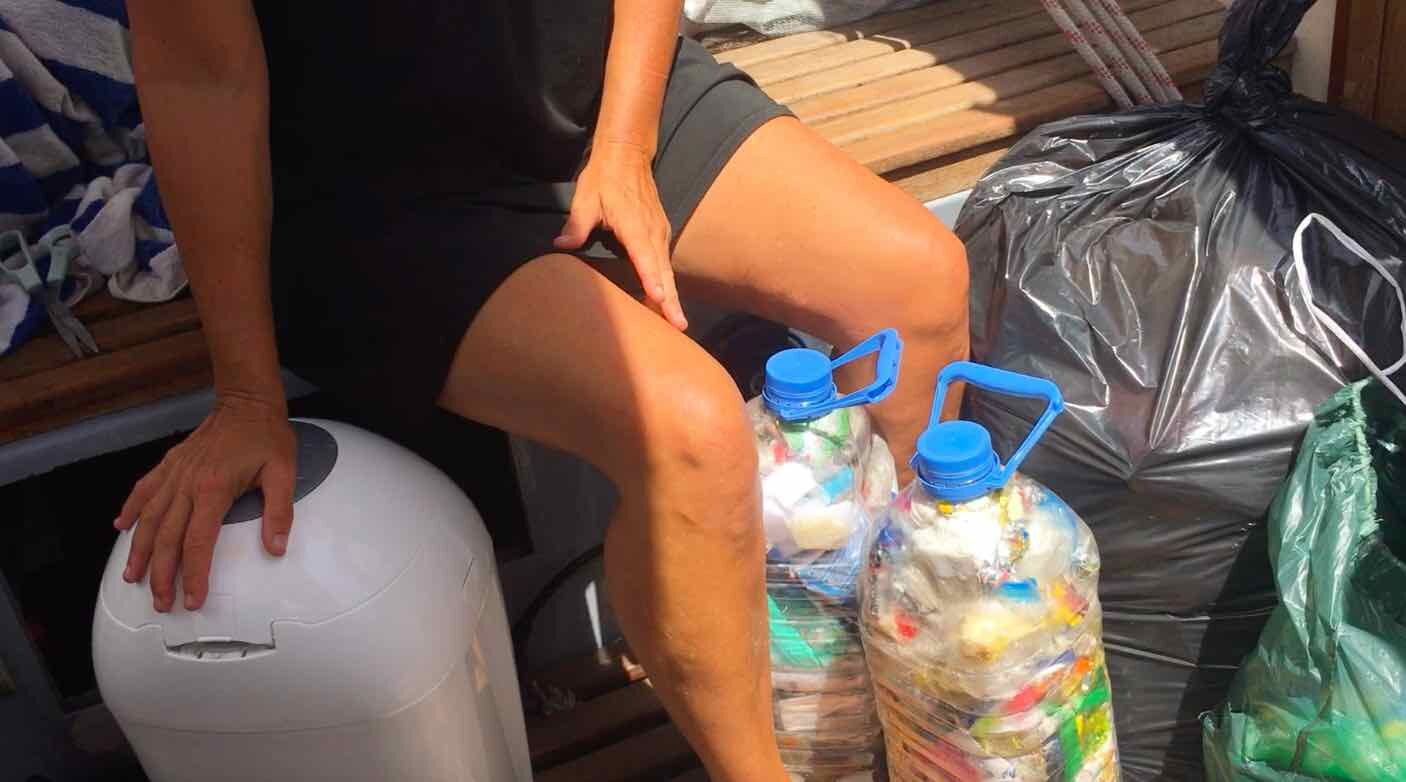
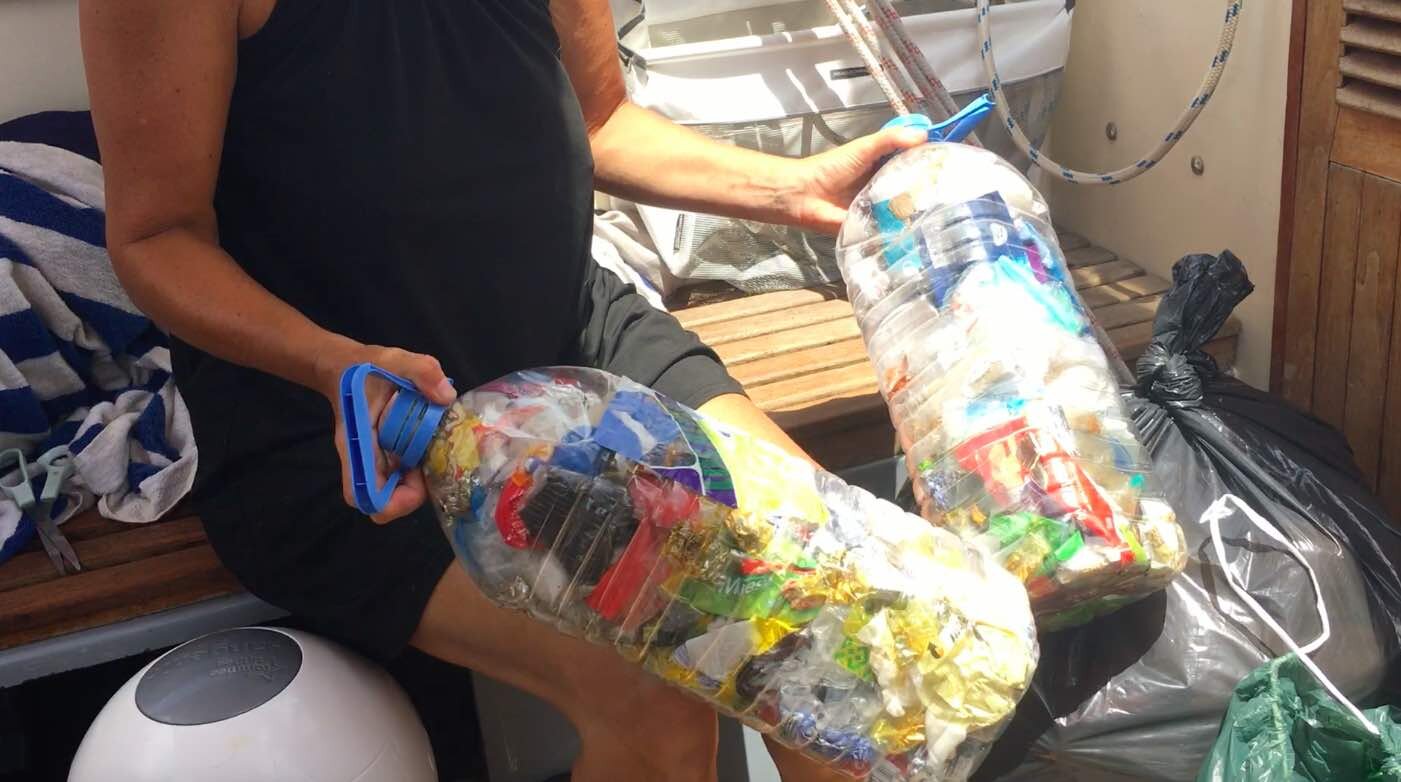
8. Make a plan for the excessive trash on board during an ocean crossing.
Twenty-one days at sea will produce a lot of trash—which takes up a lot of space—and it can also produce a lot of smell. Anything organic can go overboard, but of course you don’t want to pollute our precious oceans with cans, plastic bottles, cardboard, or paper.
It’s a great idea to get rid of all your cardboard containers (like cereal boxes) before setting sail as part of your provisioning best practices. Still, you don’t want to have several bags of trash on board.
I saved 8-gallon plastic water bottles and stuffed all paper wrappers, candy wrappers, tissue and all kinds of other trash into two bottles. Three weeks of trash in two 8-gallon bottles that were easily disposed of when we got to port in Brazil and also kept any smells locked securely inside the bottle. We used only two large trash bags for all of our water bottles and soda cans. We tried to compact those heavily too.
For toilet waste, we used the greatest invention of all time—a diaper genie. This contained the smell and also kept smushed the trash keeping it minimal. The odor-reducing fragrant bags were easily placed inside the large trash bags along with the cans and bottles when we got to port.
It is definitely recommended to think about a plan for trash before you depart on a long sailing passage. This plan worked great for us. However, once we got to shore we were definitely happy to get all that trash off the boat!





















